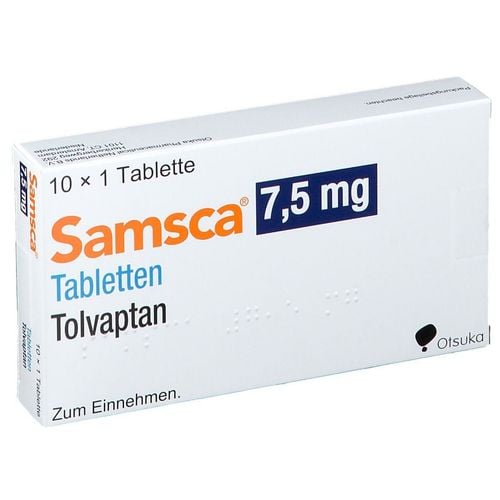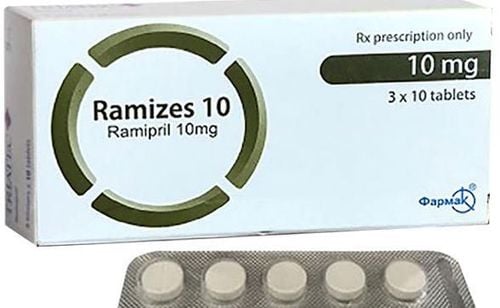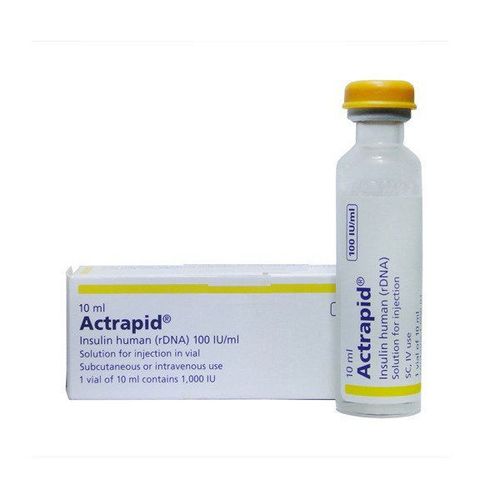This is an automatically translated article.
Wosulin drug belongs to the group of hormonal and hormonal drugs, is prepared in the form of an injectable solution, widely used in the treatment of type 1 and type 2 diabetes. To learn more about Wosulin, you can refer to Wosulin. See the article below.
1. What is Wosulin?
Wosulin medicine has the main ingredient is Human Insulin with the content of 100IU/ml and other excipients just enough. Wosulin acts on many metabolic processes of the body such as Glucid, Protid, Lipid metabolism, the most important of which is the effect on Glucid metabolism.
Glucose metabolism: Insulin helps to increase the use of glucose in cells and tissues, increases the conversion of glucose into glycogen for storage in the liver, and at the same time inhibits the process of creating sugar in the body from amino acids, thereby having a beneficial effect. Used to reduce blood glucose levels, stabilize blood sugar. Protein metabolism: Insulin increases protein synthesis and storage in cells in the body. If the body lacks insulin, it will increase protein breakdown, causing a decrease in protein in tissues, leading to weight loss. Therefore, in patients with diabetes, they will eat a lot but lose weight quickly. Lipid metabolism: Insulin helps to increase the synthesis of fatty acids from glucose and storage in tissues, thereby reducing blood lipid levels.
2. What effect does Wosulin have?
Wosulin is used in the treatment of the following cases:
Treatment of type I diabetes, also known as insulin-dependent diabetes. Treatment of type II diabetes (non-insulin dependent diabetes mellitus) when oral hypoglycemic agents are ineffective. The drug is also used in diabetic patients in emergency situations (pre-coma or coma due to diabetes), severe infections, surgery or pregnant women. Wosulin is contraindicated for people with a history of allergy to human insulin or any of its ingredients and people with hypoglycemia.
3. Dosage - how to take Wosulin
3.1. Dosage The therapeutic dose of Wosulin will depend on the disease condition as well as the blood glucose concentration of each patient. Diabetics need to adhere to treatment, should not stop or change the dose of the drug without consulting the doctor.
The average dose of Wosulin ranges from 0.5 - 1.0 UI/kg body weight, depending on the patient. Controlling blood glucose levels stably will help slow the onset and progression of diabetes complications, especially severe complications on target organs such as heart, kidneys, brain, and nerves. Therefore, patients need to periodically monitor blood sugar levels to monitor the effectiveness of treatment and adjust medication when needed. In elderly patients, care should be taken to avoid hypoglycemia, which is life-threatening. 3.2. How to use For the treatment of patients with diabetes in general Wosulin is usually administered subcutaneously into sites such as the abdomen, thighs, buttocks or deltoid region, in which injection into the abdominal wall is preferred over other sites. due to rapid drug absorption and conspicuous location, less discomfort to the patient. Intravenous Wosulin can be used in emergency situations. Should change the site in the same injection site, avoid injection into the same site to avoid complications of lipodystrophy at the injection site. It is a rapid-acting drug and is often combined with a slow- or long-acting insulin to ensure 24-hour glycemic control. Wosulin should be injected 30 minutes before the main meal to ensure the therapeutic effect.
4. Signs to know when using an overdose of Wosulin
When overdose of Wosulin can cause hypoglycemia, the severity depends on each case, patients may see the following symptoms:
Fatigue, anxiety, restlessness, difficulty concentrating Headache, dizziness, dizziness Feeling weak, shaking hands Pale skin, sweating. chills palpitations, palpitations, tachycardia Increased salivation Feeling of hunger, possibly stomach pain, epigastric pain, nausea, vomiting. In severe cases, convulsions, sensory disturbances, and even coma may occur. When you overdose on Wosulin, you need to immediately notify the treating doctor for advice or contact the 115 emergency center or the nearest medical facility for timely treatment.
5. Interactions with Wosulin
When using Wosulin together with other drugs that may affect the therapeutic effect of insulin such as:
Drugs such as Angiotensin-converting enzyme inhibitors, Steroids, Salicylates, MAOIs, alcohol,... can prolong it. Insulin hypoglycemic effect causes complications for patients. Contraceptives, thyroid hormones, Thiazide diuretics,... can reduce the effect of insulin, leading to a decrease in the effectiveness of treatment. Signs of hypoglycemia such as dizziness, lightheadedness, ... make it difficult to diagnose and treat.
6. Side effects of Wosulin
Wosulin can cause unwanted effects such as:
The most common side effect of Wosulin is hypoglycemia, severe hypoglycemia that can lead to unconsciousness, coma or even death. Hypersensitivity reactions redness, swelling, pain at injection site Generalized rash Gastrointestinal disturbances Some transient symptoms such as, edema, blurred vision, double vision Lipodystrophy at injection site when injection site is unchanged
7. Notes and cautions during the use of Wosulin
Caution when using for patients with impaired liver and kidney function When switching to another type of insulin, there must be guidance by the treating doctor on dosage, how to use it to ensure effective treatment. treatment and prevention of serious adverse events. Due to the possibility of a precipitation reaction in the syringe, the drug in the pump should not be used for continuous subcutaneous infusion. Due to the possible side effects of excessive hypoglycemia, caution should be exercised when driving or operating machinery. Wosulin can be used by pregnant and lactating women, but it is necessary to consult a doctor. Above is some information about Wosulin medicine, if you need advice or have any questions, please consult a qualified doctor or pharmacist for answers.
Please dial HOTLINE for more information or register for an appointment HERE. Download MyVinmec app to make appointments faster and to manage your bookings easily.













